Resume design tips you need to know to stand out
Searching for a new role can be an uncertain and stressful process for many people. A major component in securing your desired role is having a resume that captures your unique strengths and stands out from the rest of the applications.
This is easier said than done. It can be a difficult task to communicate who you are, what you have accomplished and your future career goals in two or three pages.
The presentation of your resume is just as important as the information itself. Make sure it is well-written and visually appealing so that potential employers can see your skills and accomplishments clearly.
Thoughtful use of font, spacing, colour and layout can take your resume to the top of the pile. To help you with your resume writing, we have compiled some helpful guidelines for success.
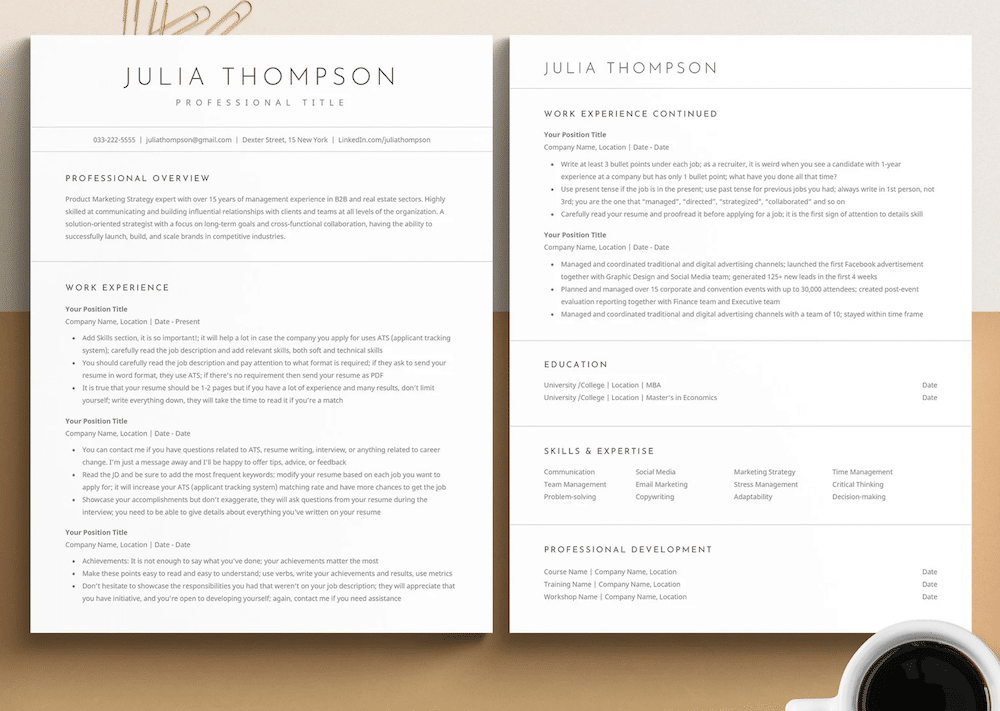
Sections to include on your resume:
Essential Sections
Your resume or CV must include at a minimum:
- your contact information
- work experience / history
- education / qualifications
- references / referees
How you order the sections is up to you. If you feel a lack of experience is holding you back, lead with education instead. Your contact details should include your email address and phone number and should sit towards the top of each page along with your name. There is no need to include your full residential address, however you can put your suburb on if you like, however this is not essential.
Are you a new graduate with minimal experience for your resume? Here are some section guides for you.
Recommended sections of a resume
There are some sections of a resume that, while not required, can be very beneficial to have. These extra sections help to give more insight into your unique skills and who you are as a professional. These include:
- Professional Summary – a few lines to provide an overview of you as a professional
- Key Skills – this may include computer applications and interpersonal skills
- Professional Memberships – industry memberships or any relevant affiliations
- Professional Development – industry specific learning or training
These sections are highly recommended because they provide a way to show your skills and experience in a different format than work experience and education. The example below shows some great ways that you can arrange your sections:
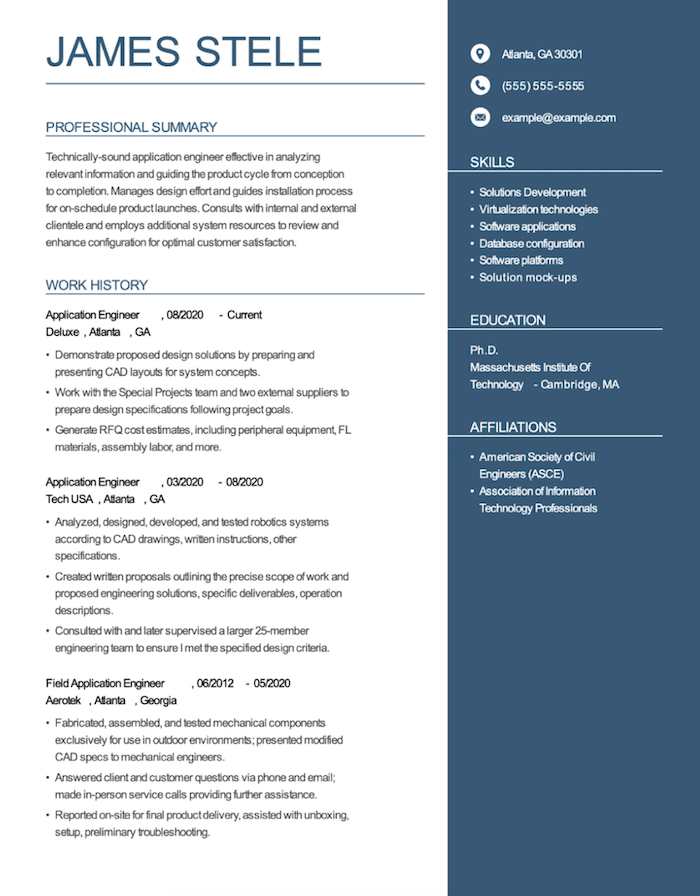
Optional Extras
- Volunteering – This can be helpful to include as it shows that you are a go-getter and can give back to your community. It also shows you are proactive in building networks with diverse groups of people.
- Visual Portfolio – If you are applying for a creative position or teaching, a portfolio of your past work is important to include in your resume. A separate PDF portfolio document that contains work samples and images inserted as a link is a great way to stand out and show what you can do. Another option is to create your own professional website to showcase your work and include the link in your contact details section.
Resume design tips to stand out- The DOs:
Make content effortless to read
The ideal resume should be a checklist of all of your accomplishments, it should not be your life story!
Remove any wordy sentences and keep your writing as concise as possible. While you want to include as much information to communicate your professional strengths, you don’t want your resume to become a page of text. Remember, less is more! Ideally, your resume should be no longer than two or three A4 pages.
When you’re deciding what information to include on your resume, it’s important to ask yourself: will this help me get the job? If the answer is no, then leave it out. Hobbies and interests are a great example of this. If you are unsure, review the job description and use this like a checklist to make sure your resume can tick off requirements that are outlined in the key selection criteria.
Lastly, remember to clearly separate your sections with a bold heading so they can be easily skimmed by potential employers.
Choose a Professional Font
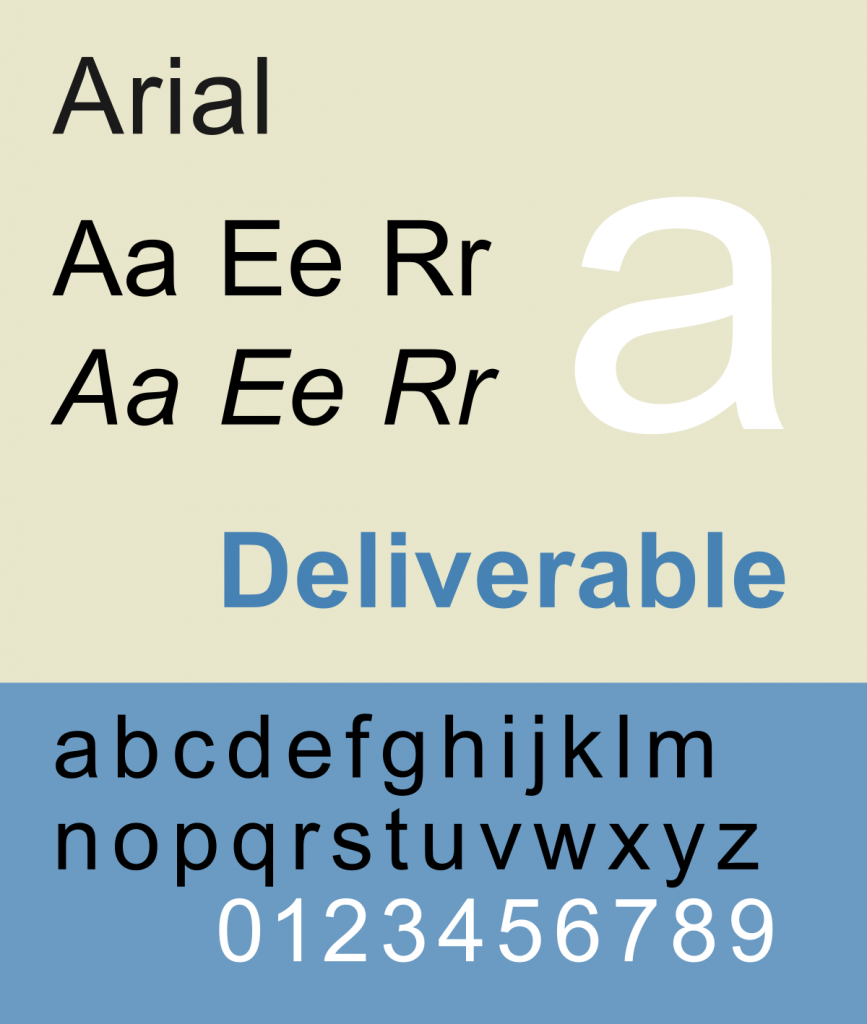
A professional font ensures that your resume can be easily read. When using fonts for resumes, follow these simple tips:
- Always use fonts that will be legible both on a screen and when printed. Keep font sizes between 11 and 13 points. If you go any smaller than that, even the sleekest font could become illegible. It is a good idea to print a test page to check.
- Be consistent with how you use different font sizes. For example, all headers should be the same size, as should all body text.
- A slightly larger font size for headers can be helpful to help separate information.
- Sans serif fonts are usually a good option as they are easy to read and have a clean, modern appearance.
- Use the same fonts throughout – including your cover letter.
Best Resume San Serif Fonts:
- Arial
- Calibri
- Helvetica
- Avenir Next
Best Resume Serif Fonts:
- Times New Roman
- Georgia
- Garamond
The example below shows a creative way of adding colour to fonts to stand out whilst still being professional:
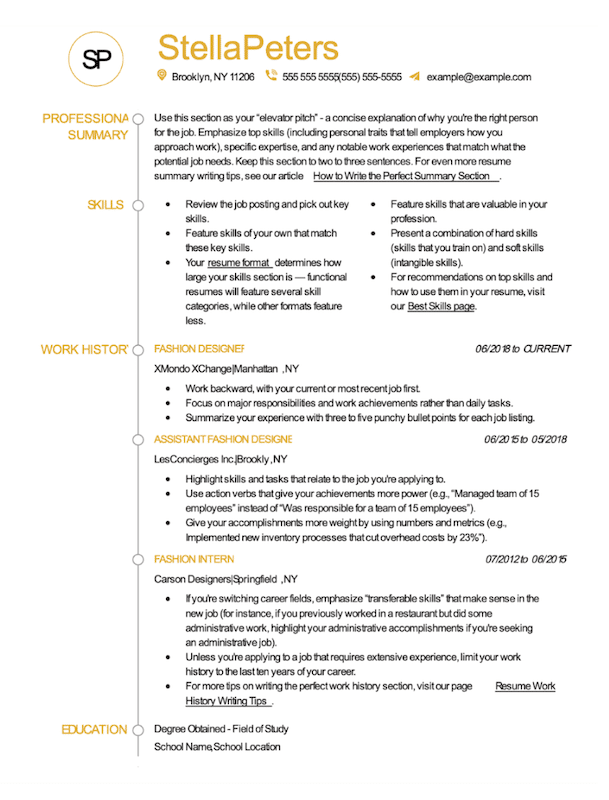
Use White Space
Don’t be afraid to leave space on your resume. White space is important as it helps the reader’s eye to focus and move over text on the page without being overwhelmed.
By spacing out sections and not cramming the page, information is more easily absorbed by the reader and is more likely to hold the reader’s attention for a longer amount of time. Effective use of white space also shows that the candidate is efficient with text and can communicate complex information clearly and succinctly.
Format Your Content
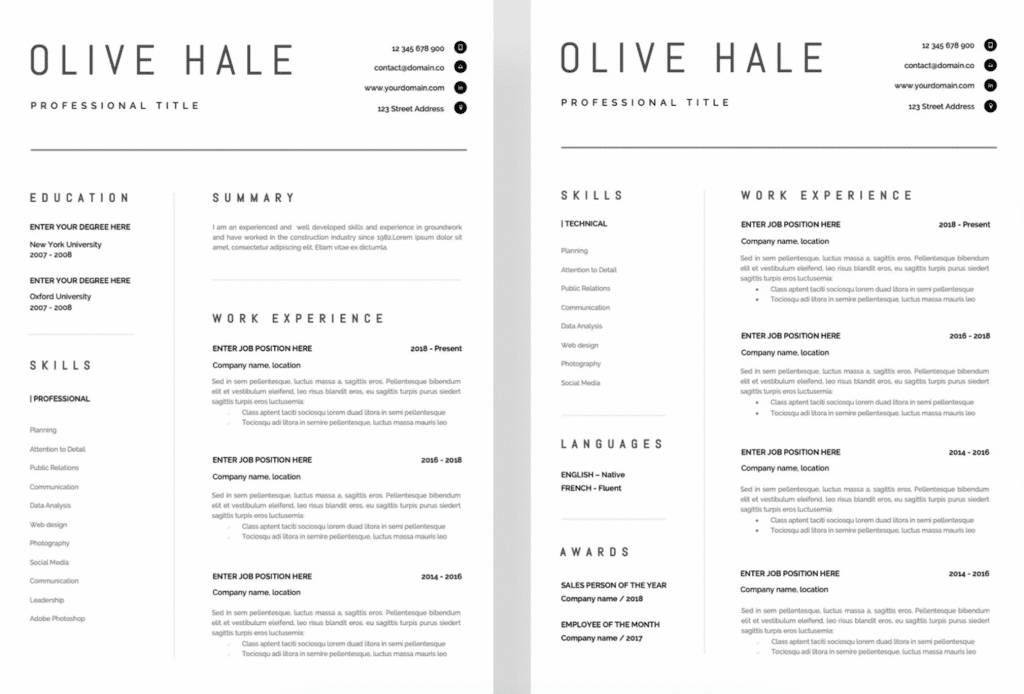
Use headings and subheadings to help break up your text to make it easier for readers to skim through. For lengthier descriptions, include bullet points.
Use hierarchy of information
Present material in a logical order and always make sure you highlight your most recent achievements. For example, list your most recent employment first, followed by older positions in chronological order.
When ordering sections, many people will open their resume with a professional summary to introduce themselves, before leading into their work experience and education. Less crucial information such as memberships and key skills are often placed after work experience and education. But again, depending on the strengths you want to highlight, you can adjust the order accordingly.
Keep your email address professional
Make sure to have a professional email address for correspondence; no nicknames or cheeky words! If you think your email is a little inappropriate, it probably is! Create a completely new email account and address solely for job searching.
Use the Right File Type
The time you spend crafting your resume will be wasted if you don’t save it in the right format. Always save your resume as a PDF to lock in the formatting and fonts. This will avoid the possibility of formatting issues when a potential employer opens the file. If your resume loses layout and fonts when it is opened, it will reflect poorly on you. PDF files are also good security as your information or resume template cannot be edited.
It is also a good idea to double check that any links in your resume are still working after exporting as a PDF file. Sometimes, PDFs can ‘save for printing’ rather than ‘for online’ and internet links will not be active.
Resume design tips – What NOT to do so you stand out in the right way
X – Forget your cover letter
It is an expectation that you submit your application with a covering letter that summarises your skills and experience and addresses key selection criteria. So don’t forget it, unless they specifically ask you NOT to provide one.
X – Get too creative with the presentation
Regardless of industry, your resume is a formal document and you are putting yourself forward as a professional. Don’t use crazy colours, fonts or include unnecessary decoration. Stick to neutral colours or a limited colour scheme that can be read easily and can print clearly.
X – Include a photo
This is a minefield for employers and candidates alike due to potential bias and anti-discrimination laws. A resume photo is a no-no. Unless you are going for a modelling job.
Your resume should reflect you as a professional and that means more than just listing your qualifications. It should be clear, concise, and most importantly – unique. Whether using a template or starting from scratch, it can take time to get things right but your efforts will be well worth it.
Written by Emma Moore. Based in Bayside in Melbourne, Emma has spent 15 years in Corporate Talent Acquisition roles in global organizations across Consulting, Professional Services and Telecommunications. Emma has tertiary qualifications in Psychology, Business (Human Resource Management) and Careers Development and Education. Emma has read and provided feedback on thousands of resumes, interviewed hundreds of candidates and made those all important hiring decisions with her stakeholders. Emma is in a unique position to enable you to represent yourself in the best possible way. She knows exactly what prospective employers like to see and hear throughout the application and interview process as a result of being ‘on the other side of the fence’ for so many years.
Want to work with Emma? She can fix your resume for you! Contact her today to set up a Resume, LinkedIn or Interview Coaching session.

